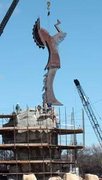On EconTalk, Russ Roberts, debated Noah Smith on whether economics is a science. It was a fun discussion well worth listening to.
At one point Russ brought claimed Paul Samuelson predicted a return to the massive employment of the Great Depression when military spending fell after World War II. Noah Smith replied there was a recession. I wrote a brief comment, although it turns out that Russ already posted Geoffrey Moore's note on business cycle chronology which treated the 1945 downturn as sui generis.
My analysis:
The NBER indicates a cyclical peak on February, 1945 with a trough 8 months later. Germany surrendered May 8th and Japan August 15th. Japan's formal surrender was on September 2nd aboard the U.S.S. Missouri. General MacArthur's boss was the former senator form Missouri. Missouri is also the only state with two Federal Reserve Banks.
The unemployment rate was 1.1% at the NBER cyclical peak. The highest it rose to in 1946 was 4.26%.
Apparently someone predicted 8 million unemployed in 1946. Some predictions were even wilder.
Yes there was a downturn as the U.S. economy ramped down from its most fevered war pace. Looking at key series from their peaks to troughs, industrial production declined 35.5% from August, 1944 through February 1946. Payroll employment dropped by 3.3 million jobs from November, 1943 through September, 1945. Almost two million of that drop was in September, 1945, more or less VJ Day.
The cyclical trough (October, 1945) corresponds to the first post war month. The 37 month expansion that followed ended in November, 1948.
Do you want to call the 1945 cyclical episode a recession, a peacetime adjustment, or a preliminary ramp-down of the state driven economy? Geoffrey Moore wrote, "There remains the brief contraction after World War II, February—October 1945, which marked the transition from a wartime to a peacetime economy, and which is the most difficult of all to characterize because different measures yield such different results. However, in terms of its impact upon the well-being of the population it must surely be classed among the more modest of those in our list." Interestingly, Moore chooses his criterion of severity as welfare not aggregate demand or production, the more Keynesian categories.
i did not get interested in the business cycle until maybe the 1973-75 recession, on which I wrote my dissertation. My first memory of economics would have been the copy of Samuelson's Economics which I studied to prepare for high school debate. I do not remember a discussions of business cycle history that talked about either the 1945 downturn or the 1945-48 recovery. They would have either ignored it or refereed to it as a wartime transition or demobilization. Indeed, I do not remember the textbooks of my youth (Keynesian all) dwelling on either the 1945 contraction nor the 1945-48 expansion.
One excuse for their silence is that quarterly GDP data starts in 1947. Still the widespread prediction of a return to the Great Depression by the secular stagnationists was not mentioned in polite company.
Wednesday, December 30, 2015
Subscribe to:
Comments (Atom)
